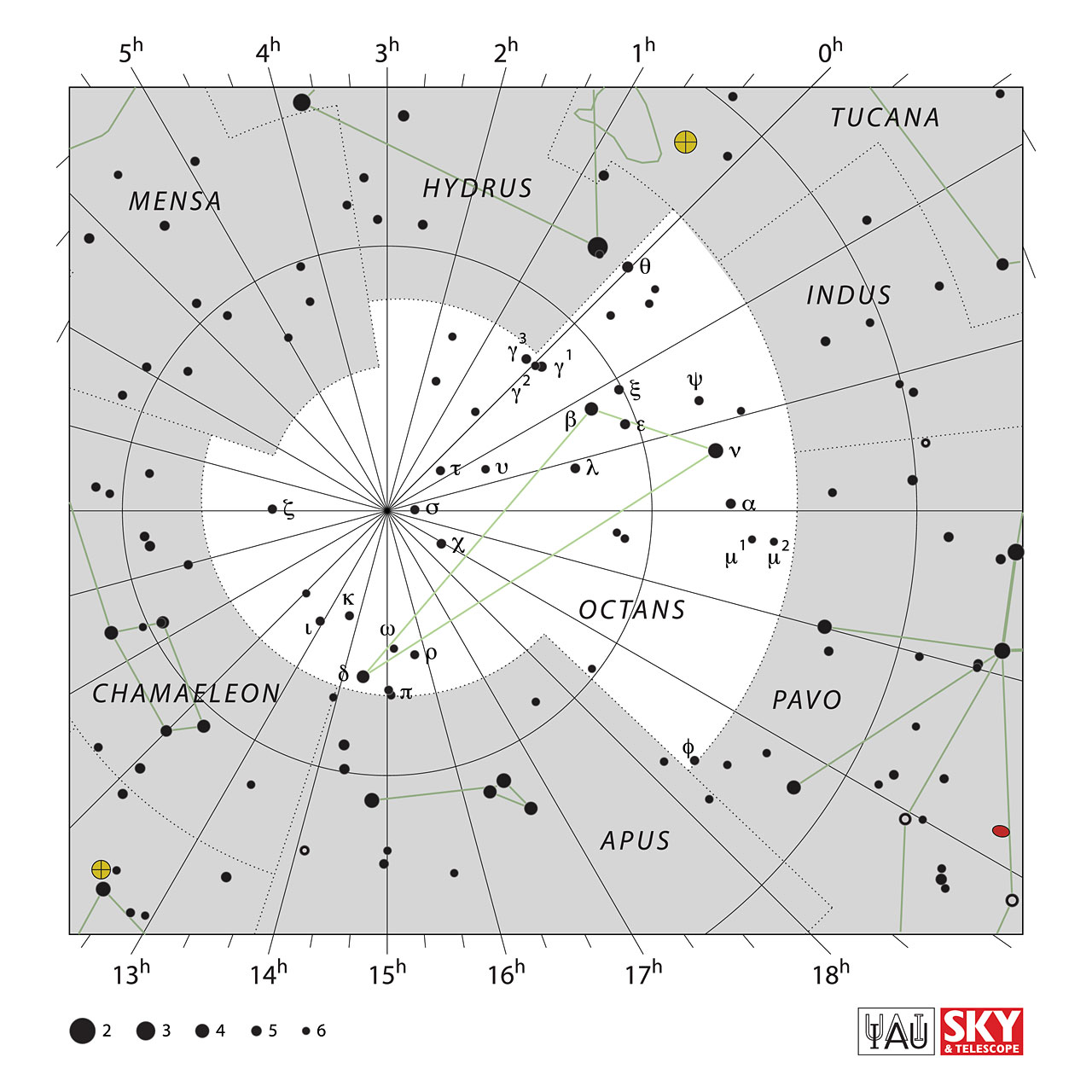Octans


Octans is a faint constellation in the southern sky, most notable for containing the south celestial pole.
Whereas the north celestial pole lies close to the pole star Polaris, the south celestial pole lies in a dark area of the sky. Octans contains only one star brighter than fourth magnitude, and there are no stars visible to the naked eye within a degree of the pole.
Octans is named after the octant, a navigational instrument: a compact form of quadrant used for measuring the angles between stars. The name was applied to this sky area by Nicolas Louis de Lacaille in 1756, as one of fourteen constellations which celebrate tools. Its name is Latin for the eighth part of a circle.
Lying away from the plane of the Milky Way, Octans contains no bright deep sky objects.
In India Octans is known as ಅಷ್ಟಕ (Ashthaka).
Octans contains:
-
Stars
- ν-Oct (mag 3.7)
- β-Oct (mag 4.1)
- δ-Oct (mag 4.3)
- θ-Oct (mag 4.8)
- γ¹-Oct (mag 5.1)
- α-Oct (mag 5.1)
- ε-Oct (mag 5.2)
- χ-Oct (mag 5.3)
- γ³-Oct (mag 5.3)
- ξ-Oct (mag 5.3)
- ζ-Oct (mag 5.4)
- σ-Oct (mag 5.4)
- φ-Oct (mag 5.5)
- HD (mag 5.5)
- ψ-Oct (mag 5.5)
- τ-Oct (mag 5.5)
- ι-Oct (mag 5.5)
- κ-Oct (mag 5.6)
- ρ-Oct (mag 5.6)
- π¹-Oct (mag 5.6)
- π²-Oct (mag 5.7)
- HD 11025 (mag 5.7)
- γ²-Oct (mag 5.7)
- HD 222806 (mag 5.7)
- υ-Oct (mag 5.8)
-
Open Clusters
- None
-
Globular Clusters
- None
-
Galaxy
View Octans in 3D 
Source: Wikipedia, in-the-sky.org
Image Courtesy: Sky&Telescope & IAU, Illustration Images linked from Urania's Mirror on Wikmedia Commons by Sidney Hall
Image Courtesy: Sky&Telescope & IAU, Illustration Images linked from Urania's Mirror on Wikmedia Commons by Sidney Hall
